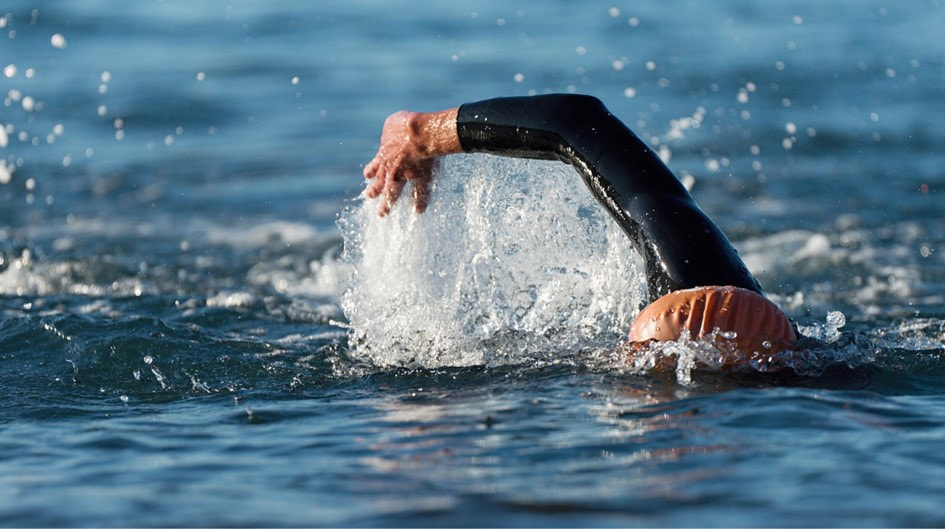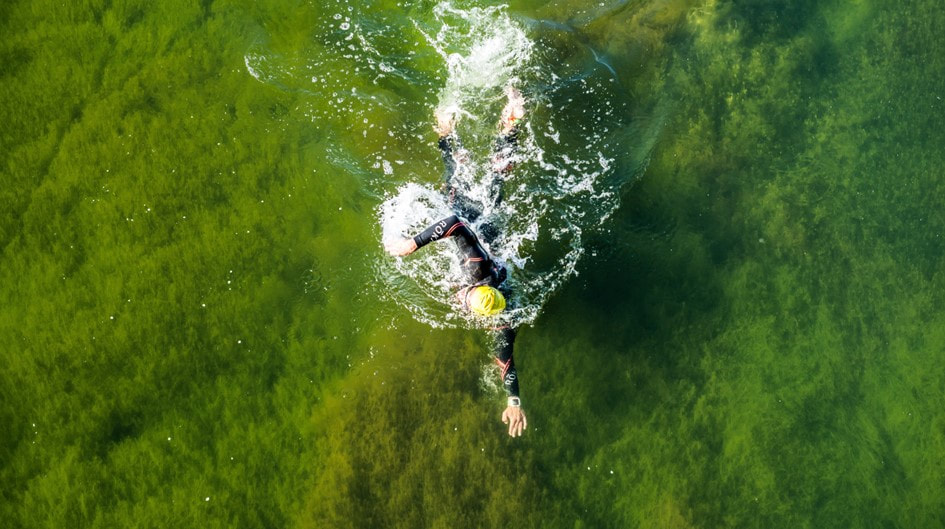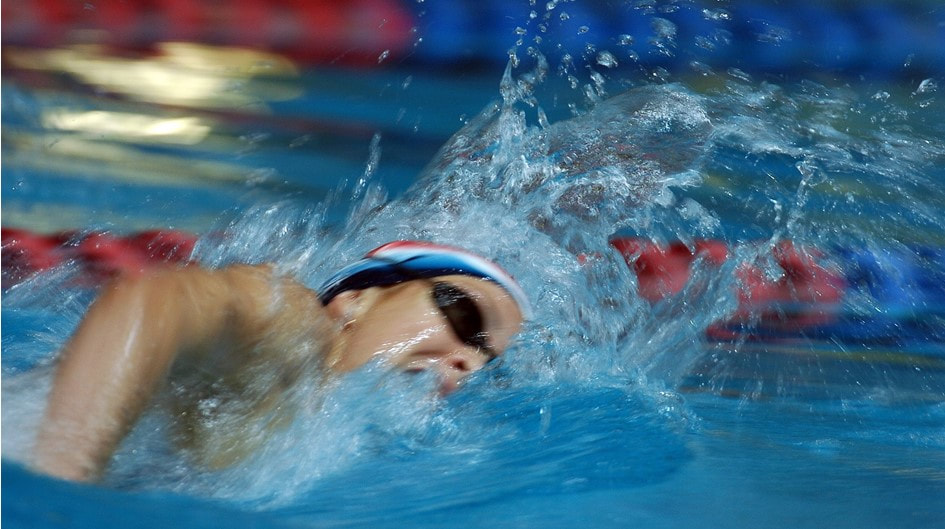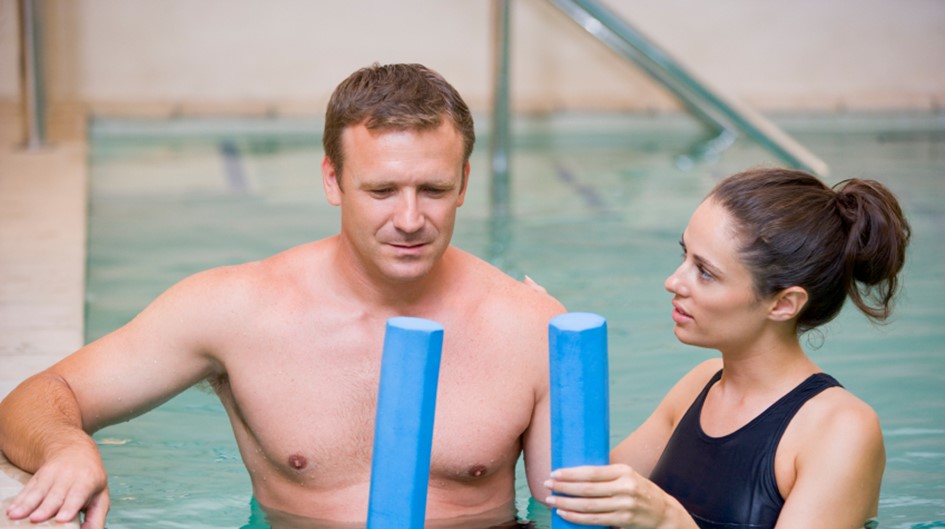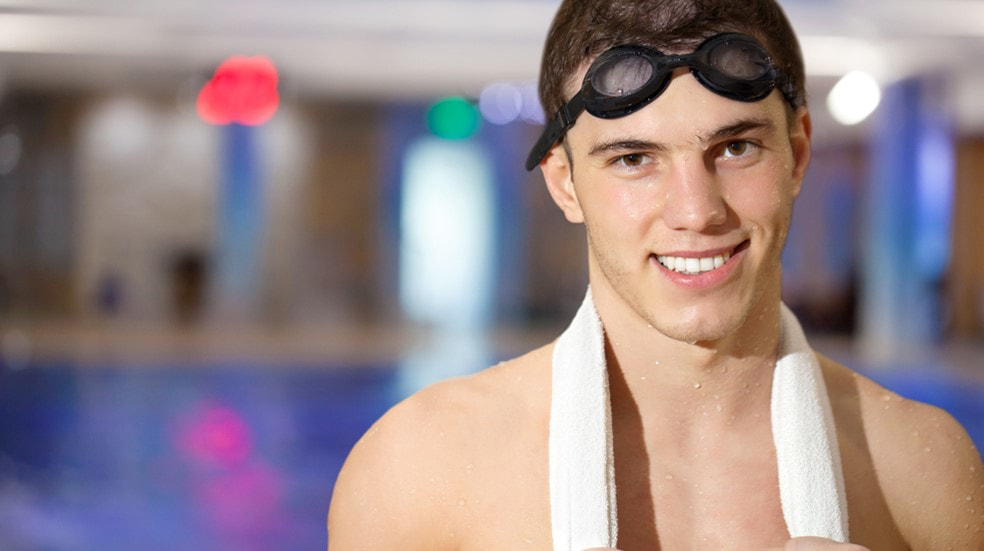|
Tips for Overcoming Open Water Swim Fears
For many triathletes and open water swimmers, a lake, the sea or even rivers can trigger a sense of panic and anxiety. This can result in swimming off course and swimming longer distances than necessary. It can result in irregular breathing making your swim far more difficult. It is important to work on removing these mental blocks and anxiety to ensure that you are swimming efficiently in open water. Most Common Open Water Fears Poor water clarity: Murky lakes or cloudy seas that obscure the depths make many swimmers feel uneasy as they have no idea what they are swimming over and whether there are obstacles in their way. Deep, clear water: In contrast to pool swimming or your lessons, visibly seeing the bottom of the ocean far beneath you can make some feel frightened and uncomfortable. This feeling has often been compared to vertigo. Sea life: It is very common for even adult swimmers to be nervous of the idea they are not swimming alone and sharing the water with sea life. Cold Water: Open water swimming is usually a lot colder that a swimming pool and lessons. Disorientation: Finding your swim bearings in open water can take some getting used to. There is no bottom of the pool to concentrate on to follow a straight line. Equally, as in your lessons, there aren’t any floating lane ropes or visual cues to support you. The water can also be very unpredictable with currents, chops, and swell. Ways to Overcome your Fears of Open Water Swimming Introducing yourself slowly to open water can typically help swimmers and triathletes overcome their fears. Identify which elements make you anxious and gradually expose yourself to those elements. By gradually doing this, your negative response will reduce and will empower you to stay relaxed and calm. We can help you with this during your Strictly Swimming London lessons. Find the best swim gear for you: Wearing the right swim gear while open water swimming is vital. A proper-fitting wetsuit of suitable thickness is necessary in cold water, and it will keep your body temperature at safe levels, add buoyancy, reduce drag and protect you against sharp objects and other swimmers. Snug, tight-fitting goggles are also a must. At Strictly Swimming London, we can practice using your wetsuit during your swimming lessons. Please talk to your coach about this. Familiarise yourself with the area: Identify good entry and exit points in the open water. Check out the water clarity and the feel of the water temperature. Research the area online and check out any forums that can offer advice on specific lakes, beaches, or rivers. Always ask a lifeguard who may be on duty for the area for guidance on the safest parts of the area and things to look out for. Adapt technique: Unlike pool swimming or even during your lessons, swimming in the sea or lakes often requires triathletes and open water swimmers to adapt their stroke techniques to counteract the choppy water and currents. The three main adaptions are increasing to a faster turnover of the arms and stroke rate, a shorter stroke underwater and a punchier style. Swim with a friend: When heading into open water to train, take at least one other person (particularly a friend who is experienced in triathlon)— this can be either a fellow swimmer or just someone who can act as a spotter. Alternatively, why not join a swim or triathlon club. Club members can offer swim support and guidance (which is much more fun). Become mentally strong: Commit to regular open water swimming training sessions and lessons. Start off gradually and slowly. Be aware of your expectations and you will overcome the anxiety associated with open water swimming Prepare your mind for your triathlon as you may be perfecting your stroke during your lessons with us at Strictly Swimming London, but all this work in the pool can be lost if you do not practice this mindful training of what is required in open water. Most triathletes have experienced fear and anxiety in the sea and lakes. At Strictly Swimming London, we can help take you through the steps to overcome this fear. Have faith that with practice, this will be a thing of the past! In conclusion, overcoming a fear of open water and sea swimming is not easy, but it is possible. By following these steps, you can build your confidence and start enjoying the ocean in no time. Remember to take things slowly and be patient with yourself as you work through your fear. With time and practice, you'll be swimming in the ocean with ease and confidence. Please contact Strictly Swimming London for adult lessons. Participation in triathlon has boomed over the last decade. Many people of all levels have veered away from distance events like marathon running (for various reasons) and thrived on the challenge of completing in a triathlon. At Strictly Swimming London, we have found that the majority of our clients coming to their lessons, express that the swimming leg of their triathlon, to be the weakest of their three disciplines (the swim, the bike, the run). Triathlon is a challenging endurance sport and the prospect of swimming in open water can be so intimidating, that it can discourage even the toughest participant from entering a race. No matter how much triathlon training you’ve done or how many races you’ve completed, there’s just something about open water swimming that arouses fear, panic, and an increased heart rate at the start of an event. However, all of this can be a thing of the past through some calm and controlled practices. Whilst pools were closed during the coronavirus pandemic, many swimmers have taken up open water swimming and discovered a whole new world. Many novice triathletes and open water swimmers realised that they needed to learn some steps to feel more comfortable and safer in open water. Here are some helpful steps to conquer your fear and go into the open water with confidence.
Please contact Strictly Swimming London for adult lessons What are Swim Fins?
The use of Swim fins (also known as ‘flippers’) has increasingly become part of any swimmers training regime over the last couple of decades. If there is one item to purchase to help you with your swim training, it’d definitely a pair of Swim Fins! Wearing fins on your feet, allows you to propel yourself with far greater speed and power to your leg kick and also increases the fun of rocketing through the water. Integrating the use of swim fins into your training can help prefect many elements of your swimming stroke and also your overall technique (including the correct body position and ‘height’ in the water). We always use Swim Fins during our Strictly Swimming lessons in London, so please ask our coaches advice before splashing out on a pair. The Benefits of Swim Fins 1. Improves your kick technique Using swim fins will work your upward leg kick and downward leg kick by adding resistance to these movements. If your leg kick is the weakest part of your stroke, swim fins will increase the resistance of your kick on the water as you perform each movement. This added resistance will work your quad muscles (on the downward kick) and hamstrings (on the upward kick), making you move faster and more efficiently. Your leg kick will connect with the water on a much greater scale and you will find that your hips are no longer sinking. If you feel that you go nowhere with a kick board in your lessons or training, try using swim fins to create a narrow and fast flutter kick to propel you through the water. 2. Improves your overall stroke technique The extra propulsion and speed in the water created by your swim fins will allow you to focus and develop specific elements of your technique that you are concentrating on. This extra speed and stability will help you practice more advanced drills to a higher level and can target your technique with much more accuracy and ease. 3. Develops correct body position Many novice swimmers and triathletes find it difficult to maintain good height in the water (swimming as close to the water’s surface or above). Swimming with fins increases speed in the water which in turn increases a higher body position to the water surface. So you will feel like you are zooming across the surface of the pool as your swim fins teach you how to swim on top of the water. 4. Reduces stress on your shoulders Although swimming is a moderately low-impact sport, after a while in training, your shoulders may experience quite a bit of stress. The repetitive movements of each stroke can lead to shoulder aches or even damage if proper care is not performed during your workout. Swim fins lower the impact on your shoulders (during your workout and even during lessons) as your leg kick increases proportionally within the whole stroke. 5. Help increase strength and endurance As mentioned, swim fins alleviate stress on the shoulders and the arms which allows you to swim for longer periods of time, increasing your muscle strength and endurance in the process. Working the specific muscle groups of your legs, using swim fins is among one of the top ways in developing kick strength during your swimming. 6. Improves ankle flexibility Finally, using swim fins requires your ankle to move through a greater range of motion than you make regularly kick during your stroke. Some swimmers are naturally flexible in their ankle joint, while others may find this difficult to relax and stretch during the ‘flick’ of your foot when kicking. Swim fins reinforce proper kick mechanics, allowing you to develop ankle flexibility faster than training without fins. Types of Swim Fins
Overall swimming fast is much more fun, so why not mix up your training by including some training sets whilst wearing your swim fins. There are a number of different ways that you can vary your workout with fins, so let our Strictly Swimming coaches in London help you develop a new training regime in the water whilst using them! Ease yourself into the shallow end of the pool
The easiest way to conquer fear of the water is to start in the shallow end of the pool. You will be able to stand in the water, lowering yourself slowly and gently depending on how confident you are feeling. Practice holding your breath while your head is under the surface, with the knowledge that you can stand up and come up for air at any time. Push and Glide to Warm Up Don’t worry about getting into the pool and not being able to swim to warm up. Start your swimming workout and lessons by pushing off the wall and gliding in a horizontal position with our arms stretched out and your feet pressed together with your toes pointing. Repeating this exercise will help you warm up. Devote plenty of time to developing your swimming Building your confidence and endurance and becoming a stronger swimmer requires that you spend lots of time in the swimming pool. The more time you spend, the more comfortable you’ll feel and the better swimmer you’ll become. With time, your feel on the water will increase, as will your balance in your strokes. Regular practice in the pool and in your Strictly Swimming London lessons will allow you to speed up learning and skills. Practicing between lessons will help massively. Become comfortable putting your face in the water and submerging under the water Usually, the biggest challenge for adults who are learning how to swim is keeping their faces in the water. For some people, submerging your face in the pool can feel uncomfortable and can cause anxiety. Becoming accustomed to your head in the water and the feeling of being relaxed is an important part of learning to swim. Try practicing exercises by placing your face or full head underwater during your lessons or by yourself. Holding your breath underwater is a good start to reducing the panic. Join a group swimming lesson Strictly Swimming London offer novice, intermediate, advanced and learn to swim group courses. Please see our start dates on: We have a maximum of six people in our groups. We keep our groups at a small size to allow everyone to get lots of individual attention from your coach. Courses are six weeks and focus on stroke technique. Sign up for private (individual) lessons At Strictly Swimming London, we offer private lessons for all levels and our teachers and coaches will be able to develop your swimming whether you are a beginner, a competent swimmer, or a triathlete. With individual lessons, we can focus in detail on your problems in your stroke. Practice breathing techniques After warming up using pushing and gliding techniques, try and glide on your side to incorporate some breathing techniques. Breathing is key to a successful stroke, and the more time you can spend on developing your breathing technique, the better.
There are a variety of reasons that one to one swimming lessons work better than group lessons. As an adult, the biggest benefit is that one to one lessons will be tailored to your needs, goals and starting point. Strictly Swimming Lessons London will design your one to one lessons to bring the best results. Whether you are an adult looking for an introduction to swimming or an adult looking to improve your stroke or fitness, our swimming lessons will meet your needs and personal goals. Beginner Level Adults Adult’s wanting to learn to swim usually have a different starting point. Some adults have an absolute fear of getting into the swimming pool. Other adults can easily enter the swimming pool and swim with a few swimming strokes but have absolutely no balance in the water and need to then put their feet on the pool floor. Within Strictly Swimming Lessons London, our aim is to work on all problems in a clients’ stroke, breathing and balance in the water, amongst many other elements. Our tailor-made lessons will work on your problems during your private time with your coach (rather than working on the problems that the group may have). Many adults whom have never learned to swim often have a fear of the water. Splashing and movement of the water in the pool can often exacerbate this fear during a group lessons, whereas a quieter, more peaceful private swimming lessons is often a better option for people with a fear of water and wanting to develop their confidence in the water. Improver Level Adults Equally for adult ‘improver’ one to one swimming lessons, the biggest benefit is that clients will often progress much faster than in a group lesson. Strictly Swimming Coaches London will focus in more detail on your problems within your swimming strokes and correct your individual problems. One to one interaction with your coach will allow clients to excel to a higher level, as you discuss your problems in your swimming strokes in more detail. Our coaches will devise both a short term and long term plan for every one of our private clients, which only adds to the experience of taking private lessons. We also will arrange all of your one to one lessons at a time that is convenient to you. Many of our clients are unable to commit or make every week of our group lessons, so our one to one private lessons can be scheduled around your commitments |
AUTHORPaul started competing in swimming from the age of 8 and eventually went on to represent his country all over the world. During his time at University, Paul specialised in Aquatics and the Biomechanics of Swimming and produced numerous theses on swimming performance. TOPICS
All
ARCHIVES
April 2024
|
Let's connect!
Copyright © 2024 Strictly Swimming


